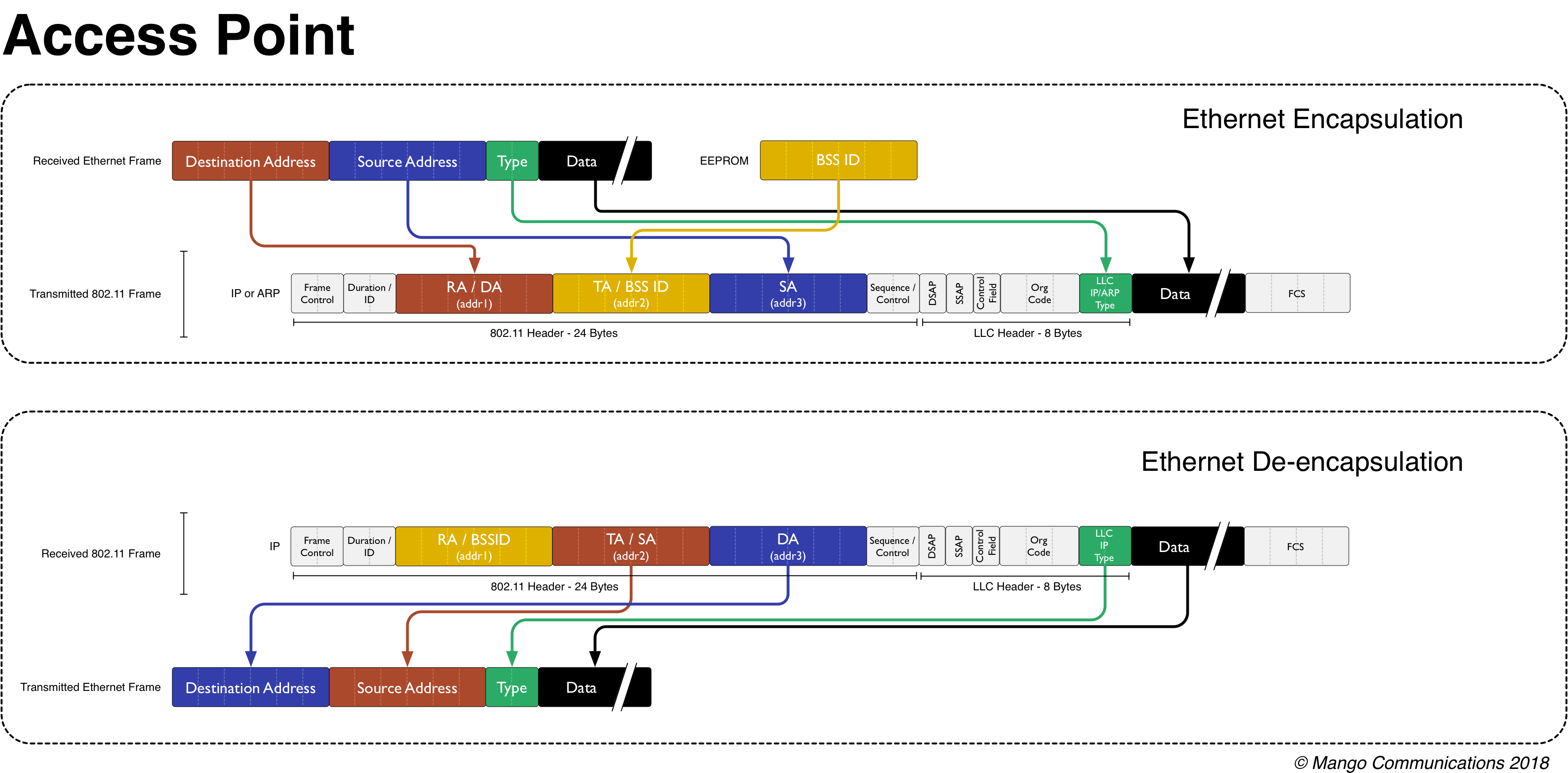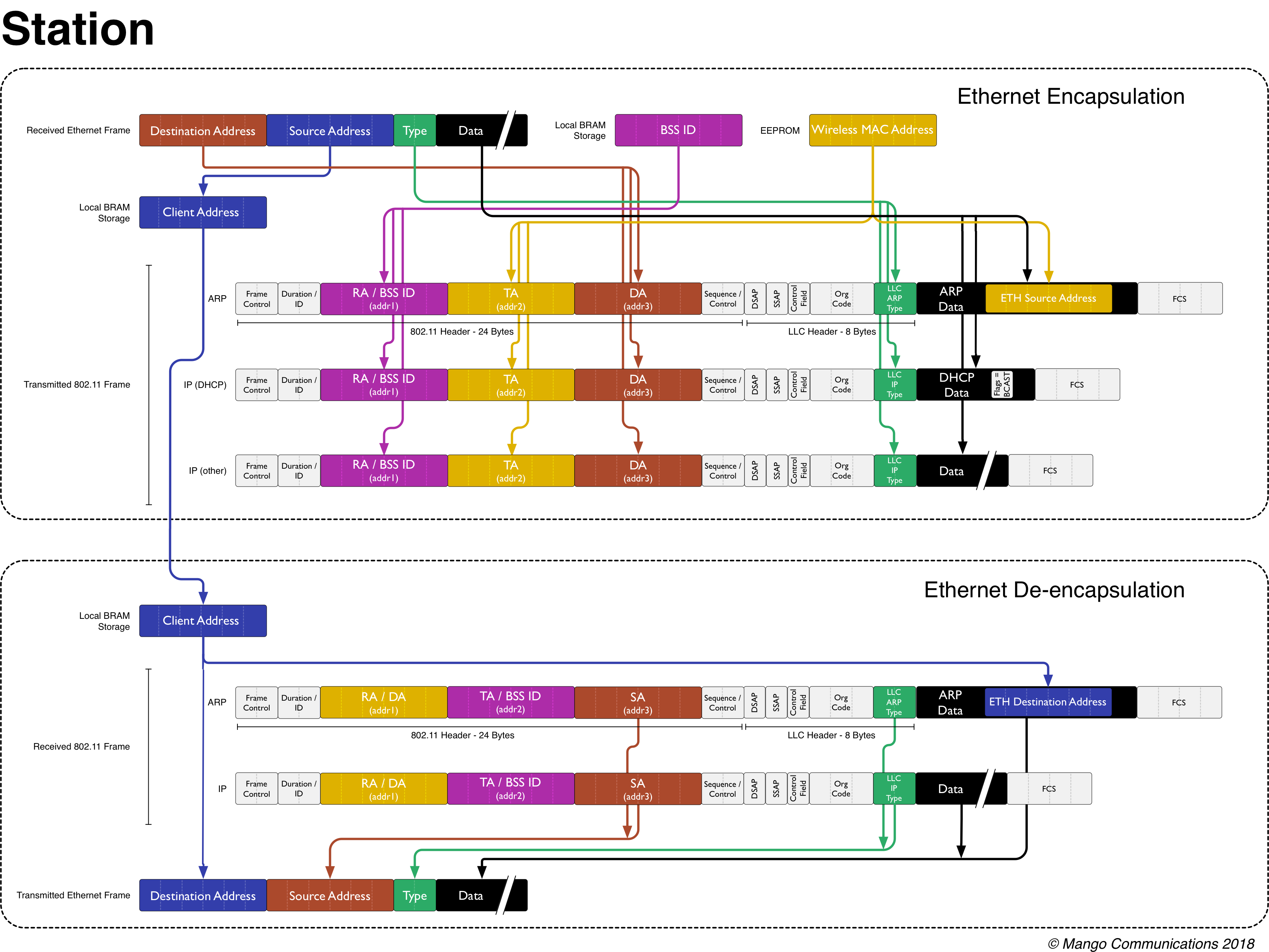| Version 4 (modified by chunter, 10 years ago) (diff) |
|---|
The 802.11 Reference Design and its documentation are under active development by the Mango team. The current release should be considered a beta- updates with bug fixes, API changes, new features and other refinements will be posted frequently. Please check the downloads page for the latest updates and post any questions about the design to the forums.
802.11 Reference Design
- Download
- Changelog
- FAQ
- Architecture
Using the Design...
Benchmarks
- IFS Calibration
- Throughput
- Transmitter Characterization
- Receiver Characterization
- Pkt. Det. Min. Power Characterization
MAC
Upper-level
Lower-level...
- PHY
Experiments Framework...
- Packet Flow
- FPGA Architecture
- FPGA Resource Usage
- App Notes
- Other Resources
- License
- Changelog
Ethernet Encapsulation and De-encapsulation
Ethernet encapsulation describes the process by which an 802.11 MPDU wraps a full Ethernet frame for transmission while Ethernet de-encapsulation describes the reverse. The 802.11-2012 standard describes this process in Annex P, "the Integration Function." The process is slightly different depending whether the device performing the action is an access point or station.
Access Point

|
| AP Encapsulation and De-encapsulation |
The above figure shows how an AP encapsulates and de-encapsulates different types of Ethernet frames.
Encapsulation
When an AP encapsulates a packet, it treats the destination address in that Ethernet frame as the receiver address (addr1) in the outgoing wireless MPDU. The source address of the Ethernet frame, however, is not the transmitter address (addr2) of the outgoing wireless MPDU -- the TA address must be the wireless MAC address (or BSSID) of the AP. Instead, the source address of the Ethernet frame is put into the third address location of the outgoing 802.11 header.
De-encapsulation
Station

|
| STA Encapsulation and De-encapsulation |